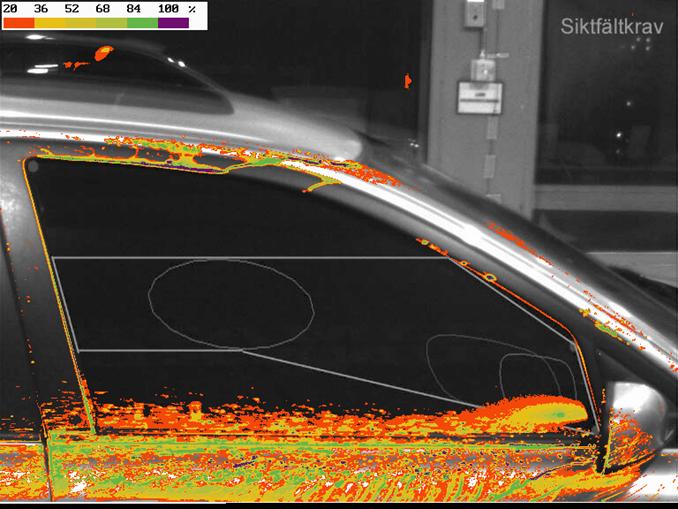 |
Numerical Simulation of Vehicle Soiling |
| PhD student: |
Tobias Tivert tobias.tivert@chalmers.se |
| Supervisor: |
Lars Davidson lada@chalmers.se |
| Co-supervisor: |
Dr. Andreas Borg aborg1@volvocars.com |
| Co-supervisor: |
Dr. Håkan Nilsson hani@chalmers.se |
| Cooperation: | Volvo Cars Corp., ANSYS Fluent Sweden |
| Sponsors: | Volvo Cars Corp., Vinnova, ANSYS Fluent |
| Publications: | [1-3] |
| Start of project: | January 2005 |
BACKGROUND On a rainy day, liquid films and droplets of water can be seen moving along the surface of a vehicle. The liquid film and droplets are subject to forces due to gravity, surface tension and aerodynamic drag. Automotive designers need to control the flow of water on the exterior surface of the vehicle to preserve the visibility through side windows and in the rear view mirrors when subject to rainy weather. The actions taken to control the flow of water on the exterior should not degrade other attribute significantly. The rear view mirrors for example need to be optimized with respect to aerodynamics, aero acoustics and water management at the same time. As active safety is gaining more attention from the car manufacturers the need to control the environment on specific locations on the car exterior increase. One example is the newly developed BLIS (Blind Spot Detection System) on VCC cars. The camera lens has to be kept clean enough to work in all customer environments. VCC is aiming to position the brand as leader in acitive safety. This puts hard demands on that the systems maintain to function over long time and in harsh environment. Vehicle soiling can be divided into the two main branches
In the initial part of the project we will evaluate and develop numerical methods to predict how droplets and water films are transported along a surface. The method will be applied on a rear view mirror to investigate how it soils the side windows. We will use two different kind of methods: particle tracking and volume of fluid (VOF). The strategi is to use Lagragian particle tracking for the drops upstream of the mirror. The riverlets and the liquid film formed on the surface of the mirror will be simulated with VOF. When the liquid film leaves the mirror surface it breaks up in large drops, which probably will be tracked with a Lagragian method. It is an open question how to model the break-up process. REFERENCES
|
|
This page, Numerical Simulation of Vehicle Soiling, should be part of a frames system at www.tfd.chalmers.se/~lada/projects/proind.html by Webmaster: Ingalena Ljungström ilj@flowsim.se |